Friday, June 30, 2006
 11:08 AM |
Negros From a Bus Window
11:08 AM |
Negros From a Bus Window
Most of us suffer from a paralysis of familiarity and proximity, a condition that dictates that the place where we take root would be the last in our priorities for discovery. Say, the New Yorker who has not seen the Statue of Liberty, or been to Central Park. Or the Dumagueteno who has not been to Siquijor, which is tantalizingly only thirty minutes away (by boat), but is seemingly forever out of reach.
Negros has always been my forgotten destination.
I -- like many of you reading this post -- have lived here my entire life. And yet, I am constantly made aware that I am a stranger, for the most part, of what Negros can offer the intrepid traveler. A quick visit to the provincial tourism office will educate you about what you are missing: the photographer Michael Ocampo has documented considerably the fact that Negros Oriental is teeming with undiscovered waterfalls, caves, lakes, rivers, hills that rival the famous ones in Bohol, beaches, and mountain retreats that should be declared world-class, but have of yet languished in touristic anonymity.
There are days when I mock myself silly for not having once set foot in Lake Balinsasayao, but I comfort myself in knowing that there are others who are worse: I have friends, for example, who have not been to Forest Camp in Valencia, or the sprawling plains of Bundo in Dauin, or have gone dolphin-watching in Bais Bay. Miggy, a poet friend, boasts of having not gone out of Dumaguete's boundaries
his entire life -- something I cannot imagine for myself, for how do you live fully when you are caught forever in the vicious gravity of your comfort zone?
Being a stranger to home is not at all uncommon. Possibly, it springs from the notion that home will "always be there," and that if we really want to, it takes only the slightest effort from us to arrange a visit to local landmarks and tourist traps, and satisfy what ounce of curiosity we may have. In other words, home is always too easy to take for granted. Cuernos de Negros, for example, is stamped into the blueprint of my geographic DNA, a drape of mountain ranges so familiar it has virtually disappeared in my everyday consideration, willingly blinded away not by choice but by over-familiarity. Sure, sometimes, while I am walking down the narrow streets of Dumaguete, or when my boat from Cebu is inching to touch port at the Boulevard, I catch a glimpse of its sprawling majesty, the shape of a pregnant woman lying down to sleep. Then the image strikes hard, and holds me, and makes me wonder about beauty and nature and what-not. And then I turn a corner, and forget about it once again.
This summer, circumstances conspired to make me a plucky traveler throughout most of the island, which had me traversing our local highways, from Dumaguete to Bacolod, taking in Negrense countryside in all its varieties and subtleties. The Ceres bus has virtually become a second home, from the air-conditioned behemoths that constantly cross the provincial boundaries, to the rickety small ones which travel to the nether-regions up north and exasperate me in their tendency to pack in passengers like sardine cans while stopping every so often to pick up
even more passengers. From sheer familiarity, I can now easily conjure in my imagination the sight of the ticketmaster tapping me on the shoulders asking me where my destination was and proceeding to punch tiny holes in my ticket to mark my fare -- marks so mysterious I have yet to learn how to decipher them.
There are delights, and there are also disappointments, in rediscovering the breadth of Negros, from Bacolod to Dumaguete. Not that my discovery is final and all-reaching. For the most part, all I could do the entire summer was to take in everything from bus windows. I always insist on sitting right beside the window, because I like that shimmer of delight that courses through me as I get fast glimpses of places I will never get to, given my citified and city-bound existence. I do not notice the blur of the places rushing past me as the bus revs on to the next stop: what I notice instead are the colors, and most of all, the smells that emanate from every other spot in the island (what comes to mind now is the sugary scent of Bais, and also the sudden noxious smell of that factory between Bais and Tanjay). There are also the differences between each town, between regions. Negros Occidental, in contrast to the cramped hillsides and bitin plains of Oriental, amazes me with its sprawling wideness, plains that dominate the landscape of Kabankalan, to Himamaylan, to La Carlota.
And all that sugar. Going north in the Oriental side, I like the small-town demeanor of most municipalities, and their special oddities. Sibulan is always a short ride, and remarkably unremarkable, while San Jose's Lala-an Boulevard always strikes me as being both creepy and amazing. There are ghost stories to savor about traveling through this stretch of San Jose -- and they seem even more immediate because of the stark beauty of the whole place. But I love the most the tree-shaded stretch between Manjuyod and Bais and Tanjay, where, on both sides of the highway, sugar fields stretch on and on, and are bordered from each particular hacienda by resplendent flame trees. The roadside old Spanish houses are refreshing, and interesting, blasts from the past -- something distinctly Oriental.
The Bala-as Cliffs, off Bindoy, proves irresistible to my romantic imagination, its sheer drop off the highway softened by the breathtaking view of Tanon Strait. Rustic quiet is all that I can think of when I see Bindoy, or Ayungon, or Tayasan, or Jimalalud. Seeing La Libertad, a town whose poblacion is basically a tiny sprawl in the shape of the letter L, I commented to a traveling companion: "What if you are asked to live in La Libertad for ten years on fifty pesos a day, in exchange for two million pesos at the end of that decade, would you do it?" He answered: "Not if I die the first year from the overwhelming quiet" -- the true metropolitan.
Guihulngan, with its seaside boulevard, curious carabao landmark, and surprising buzz, is a stark contrast to the sleepy countenance of most of northern Negros Oriental. I have come to associate it more, though, as being the requisite bus stop, where I can buy my last bottle of mineral water and a bite of really huge
bibingka, before getting off my final destination, in Canlaon. One knows for sure that one is entering the sleepy regions of the north by a strange -- and maybe even sad -- "landmark": there are plastic advertising signs for Guerrero Brandy and Boss Cigarettes
everywhere.
Once, to entertain myself in order to keep me from nodding off to sleep, I kept a list of eye-catching
barangay names as my bus swept through every quiet point beside the highway. The most memorable ones are surprising and always humorous -- Calagcalag, Tulo-tulo, Ulay, Tuyay, Canluto, Maaslum -- giving the observant traveler endless speculations as to the origins of their strange names. There is also Manjuyod's Aroma Beach Resort, a name that never ceases to remind me ... of dirty things and anatomical nether-regions.
Don't ask me why.Canlaon has been my weekend destination for the past few months, because -- in the interest of uncovering one peculiar aspect of Pinoy pop culture -- I am covering the strange goings-on known as the Hari ng Negros pageant, of which I am going to write at length next week. You can say that Canlaon is a city of lost potential: it is a beautiful place, but it is trapped in some kind of unimaginative vice that I cannot quite explain. I first visited the City in the Clouds when I was a sixth grader -- and the Canlaon in my memory has always been confined to the following sensory memories: a shower of green, and cold shivers.
Today, Canlaon has almost become a shadow of its former itself, and what was once known as the Baguio of the South has succumbed to the death rays of too much sun. My summer tan I got courtesy of not once spending a day in the beach, but spending most of my weekends in Canlaon while chasing waterfalls. Gone are the trees of my memory. Canlaon is surprisingly bald, given the fact that it is a mountain city. I asked a local why this was the case: "They cut down all the trees in the 1990s," he said, with a hint of the apologetic in his voice. That seemed true: the green canopy that draped the cliffs and hillsides of the winding road between Vallehermoso and Oriental Negros's last city to the north have been replaced by uncontrolled agriculture and poor squatter's "real estate" -- ugly houses built virtually on the air, on stilts, on sides of cliffs, obscuring everyone's view of the once magnificent-looking valley. What have replaced the greens are brown patches that resemble bacterial mange on a dirty stray dog. Still, the recent rains have somehow given reprieve to the brown baldness, and grass is finally growing -- quickly easing our sight.
There is almost nothing to do in Canlaon City. Everything closes down, except the karaoke bar, by 7:30 p.m. There is no coffee even in its premiere lodging place -- the whitewashed Canlaon City Pension House which is plunked down on an otherwise lovely compound with a magnificent view of the distant mountains that approximate the beauty of Tuscany, in Italy. I like the people, though, even the staff of the pension house, who had graciously accepted my request of reservation for a July 2 activity, only to be told last week that city officials have revoked my accommodations, because they had guests for a rodeo show.
"But I have a three-week old reservation. Don't you feel it is your duty and responsibility to respect that? Do you honestly expect to greet your visitor coming to your city with this inhospitality?" I said.
I was told instead that some city officials had peculiarly nasty persuasions.
Oh, well.There are no other places to stay in Canlaon, except JCC Inn and Midway Inn with its pet monkeys and dogs -- and that, too, is already fully-booked, also by visitors kicked out of the Pension House. Canlaon dismays me. But, thank God, it is not typical of a Negrense town. The rest of my summer travels around Negros have seen occasions of utmost graciousness and hospitality. And that is enough for me to take kindly to my good old island.
Labels: travel
[0] This is Where You Bite the Sandwich

 12:01 AM |
Top Stories by Pinoy Writers
12:01 AM |
Top Stories by Pinoy Writers
I was browsing around
Thing None Yo! and chanced upon
Secondcup's
musings about her top ten favorite short stories in English by Filipino writers. That got me to do my own thinking, and ranking.
What exactly are my top ten favorite short stories? I thought about it hard, and could not readily settle for ten -- I
had to increase the number to twenty, to be safe, to consider with all sincerity all the memorable stories that hit me between the eyes the first time I read them, that proved eventually influential, and that had me salivating in sheer envy. These are the stories that I revisit from time to time to restore my sometimes flagging faith in literature and in my own writing. They never cease to amaze me, even after countless rereadings, and for that, they are my favorites.
Midsummer by Manuel Arguilla
The Summer Solstice by Nick Joaquin
The Death of Fray Salvador Montano, Conquistador of Negros by Rosario Cruz Lucero
L'Aquilone du Estrellas by Dean Francis Alfar
Faith, Love, Time, and Dr. Lazaro by Gregorio Brillantes
The Axolotl Colony by Jaime An Lim
Good Intentions 101: SY '71-'72 by Menchu Aquino Sarmiento
The Assassin's Tale by Timothy Montes
Stories by Cesar Ruiz Aquino
Dance by Isolde Amante
We Will Not Cry About This by Socorro Villanueva
Boys Who Like Boys by Vicente Groyon III
The Injury Zone by Lakambini Sitoy
The Execution by Charlson Ong
In the Garden by Jose Dalisay Jr.
The Black Monkey by Edith Tiempo
Equivalents by Noelle Quintos de Jesus
Homecoming by Paulino Lim Jr.
My Brother's Peculiar Chicken by Alejandro Roces
Undercurrents by Janet Villa
That this list can still change is of course without question.
What are your favorite Pinoy stories? [
Hey, let's make this a meme! I'm tagging Dean Alfar, Nikki Alfar, Vin Simbulan, Zarah Gagatiga, Ginny Mata, John Bengan, James Neish, Ned Parfan, Paolo Manalo, Janet Villa, Kit Kwe, Wendell Capili, Dominique Cimafranca, Gelo Suarez, Naya Valdellon, Patricia Evangelista, Ino Habana, Larry Ypil, Resty Odon, Manuel L. Quezon III, Wanggo Gallaga, and Willi Pascual.
That's a lot of tagging, but I don't care, hehehe.]
Labels: philippine literature
[0] This is Where You Bite the Sandwich

Thursday, June 29, 2006
Frasier's Eddie
has passed away. I miss that dog already.
Labels: television
[0] This is Where You Bite the Sandwich

 10:40 AM |
Where is the Spy in the Sandwich?
10:40 AM |
Where is the Spy in the Sandwich?
Busy, busy, busy...

Incredible workload, with a ton of teaching units to get by.
(Imagine this: there are days when I teach from 9 a.m. to 9 p.m.) Hellish first days of class, and I still see no end in sight. Hundreds of problems to solve. Thousands of committee meetings to attend. Millions of other commitments to settle. On top of that, there is pressure to finish my MA. It's a vicious cycle. Sometimes I wonder if I am destined to live forever like this. It's not right. Broke, too. So broke I just want to laugh at the whole thing.
Ayayay. But I'll be back, don't worry.
I'll be back.Labels: blogging, life
[0] This is Where You Bite the Sandwich

Thursday, June 22, 2006
Silliman University's Department of English and Literature is looking for individuals to fill up full-time or permanent teaching posts beginning with school-year 2006-2007.
Qualifications: Male or female, with a
Ph.D. in
Linguistics, Applied Linguistics, or English (Language Studies), and communicates proficiently both orally and in writing.
Please send resume to:
Prof. Andrea Gomez Soluta
Department of English and Literature
College of Arts and Sciences
1/F Katipunan Hall
Silliman University
6200 Dumaguete City
Or you can send the resume in MS Word or PDF format to the following e-mail address: english@su.edu.ph
For further inquiries, please call (035) 422-6002 local 350, and look for either Mr. Michael Patron or Prof. Andrea Soluta.
Labels: silliman, teaching
[0] This is Where You Bite the Sandwich

Sunday, June 18, 2006
Penguin Classics is publishing Jose Rizal's
Noli Me Tangere, with translation and notes by Harold Augenbraum.

This is the first Filipino literary work published by the legendary imprint.
Two snaps for Pepe!Labels: books, philippine literature
[0] This is Where You Bite the Sandwich

Saturday, June 17, 2006
 11:57 PM |
Peryodistang Pinay
11:57 PM |
Peryodistang Pinay
Isolde Amante now
blogs.
Labels: blogging, philippine literature, writers
[0] This is Where You Bite the Sandwich

Tuesday, June 13, 2006
 12:37 PM |
A Strange Thought
12:37 PM |
A Strange Thought
What's procedure without results? Answer: bureaucracy. Also this: A platypus is a duck made by a committee.
Labels: life
[0] This is Where You Bite the Sandwich

Monday, June 12, 2006
 12:01 AM |
How We Walk On
12:01 AM |
How We Walk On
All rites of passage,
Ino, are sad --
poignant is the right word -- because they are, in fact, a little death, a goodbye to a part of you that must be transformed, and
cannot continue in the new journey ahead. It's the life after death, the blossoming after the rotting, the butterfly after the cold coffin of the cocoon. Cherish that sad smile, that soft, fearful uncertainty in the hollows of your stomach. They tell you that inspite of everything, you can still go on.
Today, too, is my Independence Day.
Labels: life
[0] This is Where You Bite the Sandwich

Sunday, June 11, 2006
 11:14 PM |
Two Poems From That Parfan Boy
11:14 PM |
Two Poems From That Parfan Boy
The incandescent Ned Parfan has
two poems in
Sunday Inquirer Magazine.
Labels: philippine literature, poetry, writers
[0] This is Where You Bite the Sandwich

I don't get it. I don't get how and why some people perceive and take offense so readily. I've always believed that in this world, in this sad human reality, you really cannot please everybody
and that your only salvation is to do the best you can with what you do, and hope that that is enough. But what if people you respect, especially someone you think will be
the least to judge you, will point out something in what you do and paint everything in a surprising shade of malice, even a kind of evil?
You collapse.
Everything in you, the core of your being becomes small. Some would call this "demoralization."
I call this death. Sometimes, I am tempted to mourn the part of me who wants to do something good, who genuinely wants to do something positive, but can no longer do so because of puzzling bureaucracy. Honestly, I tried to follow what ways were prescibed -- but I am at the ends of my hope's rope: I am now told, to my biggest surprise, that
that path is "wrong" as well. I am puzzled. Most of all, I am hurt.
I really don't want to go on anymore, and I want to wrench myself away from all these crusades and just do ... nothing. I once tried to cure this impasse before by becoming selfish, by not contributing anymore to "the common good." Instead I focused on me, on my writing, on my career, and cared less about what went on about me.
Why did I ever decide to come out of that shell hoping that I can finally help? Was that the wrong move? Is doing absolutely nothing the ultimate salvation? Maybe it is. Or maybe there will be another world I can inhabit where things are a bit brighter, more positive. I don't know.
I don't know. But let's see what happens in the next few days. I know that a crucial personal decision will soon be at hand,
and I really don't want to be called an insensitive boat-rocker anymore.
Labels: life
[0] This is Where You Bite the Sandwich

Friday, June 09, 2006
 11:55 PM |
Faces From the Summer Workshop in Dumaguete
11:55 PM |
Faces From the Summer Workshop in Dumaguete
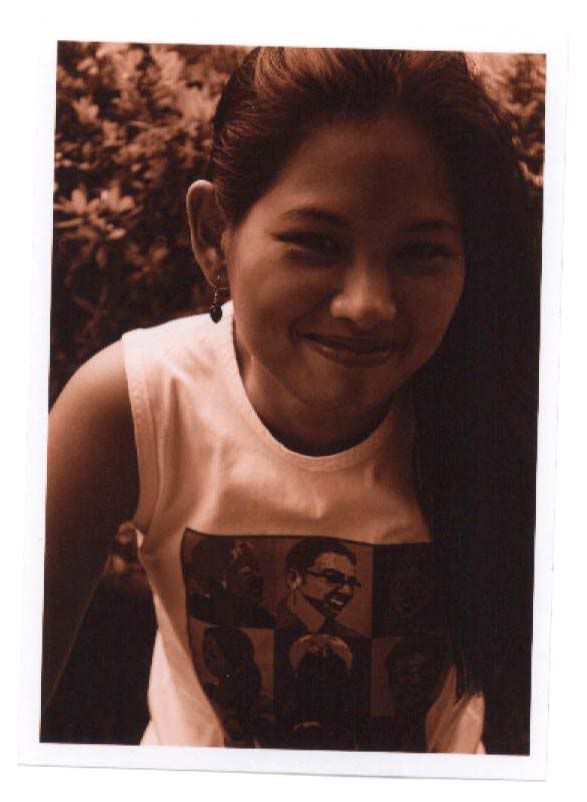
Ana Escalante Neri
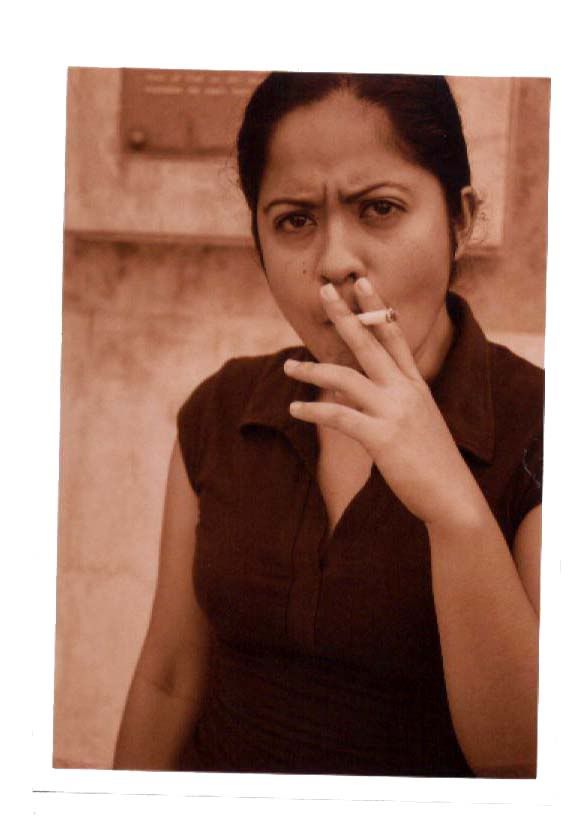
Andrea Teran
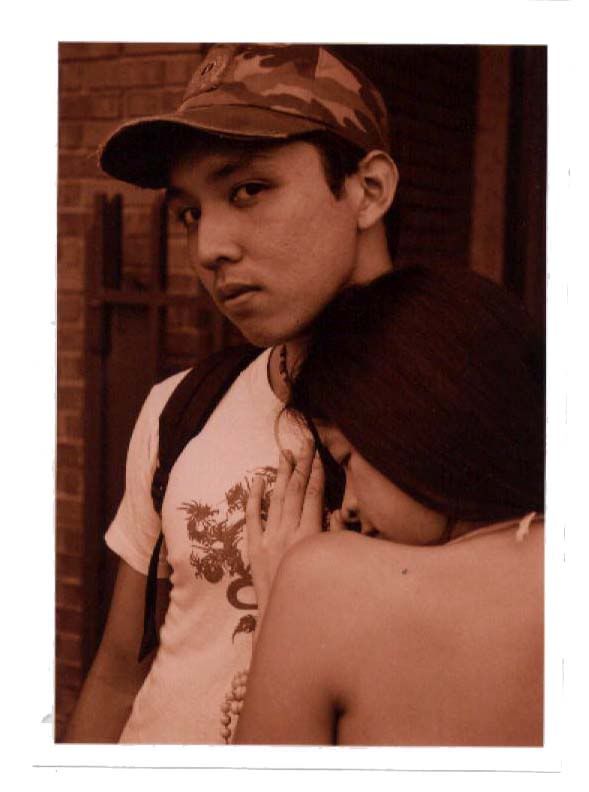
Ino Habana
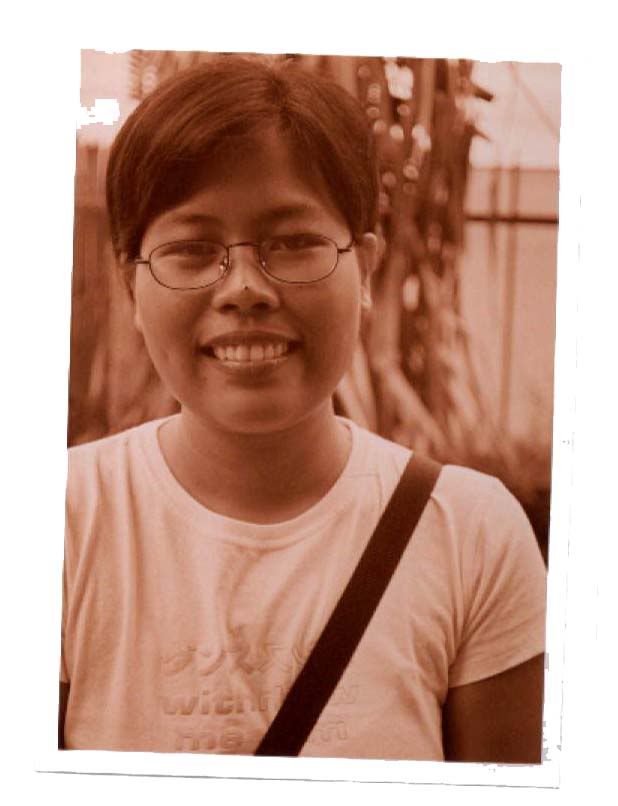
Erin Cabanawan
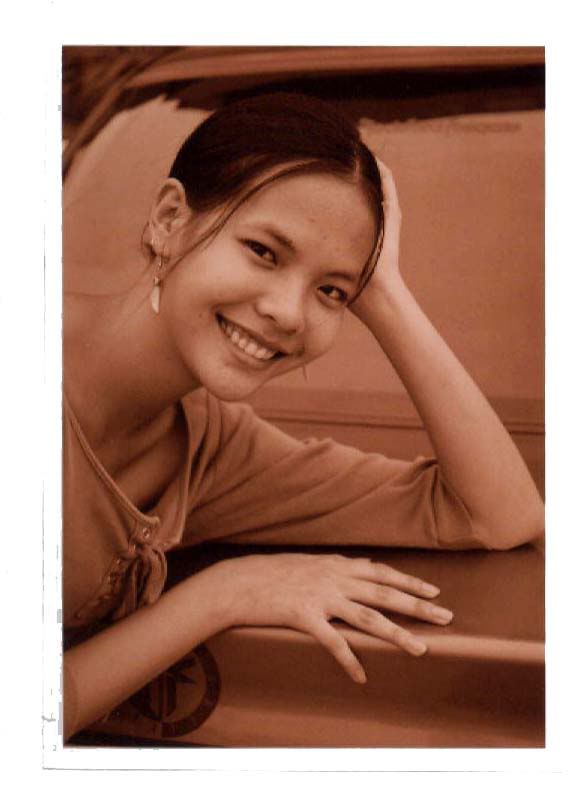
Larissa Mae Suarez
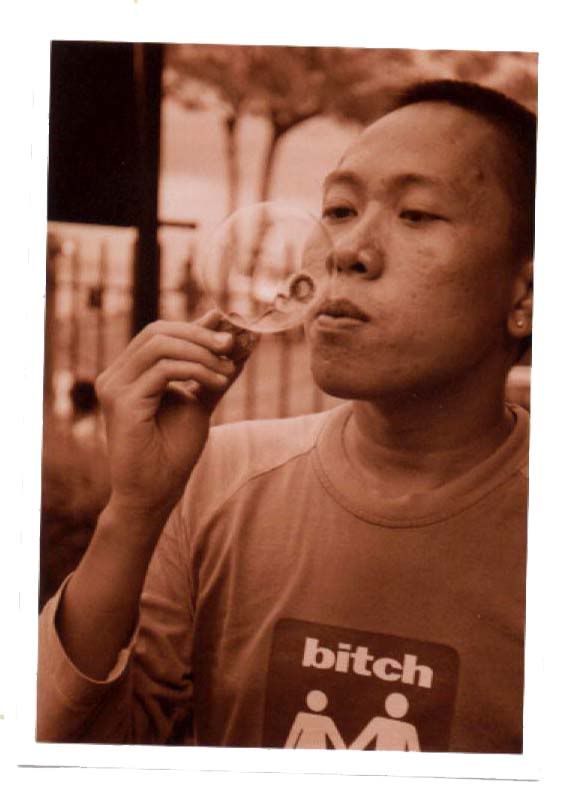
Darwin Chiong
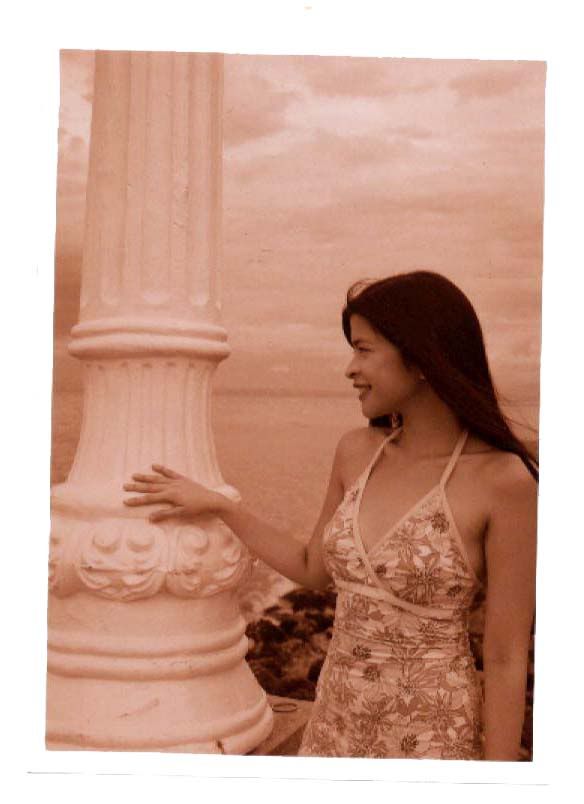
Patricia Evangelista
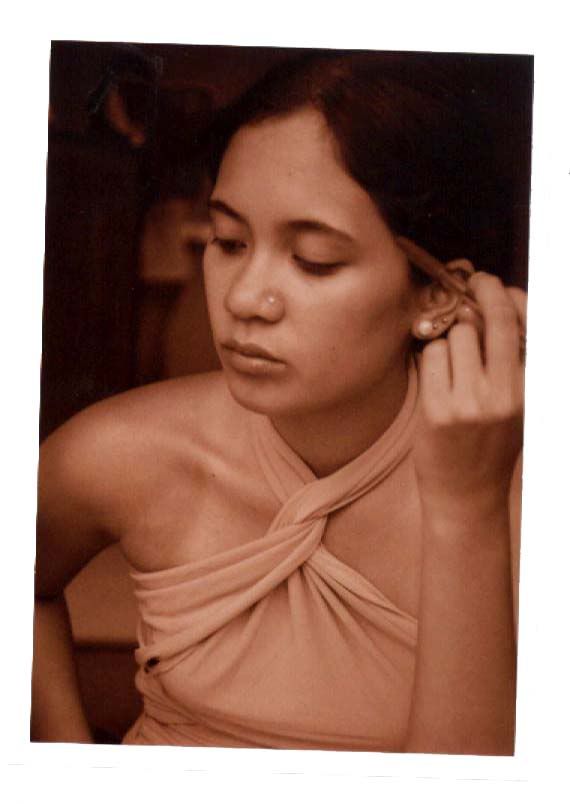
Michellan Sarile
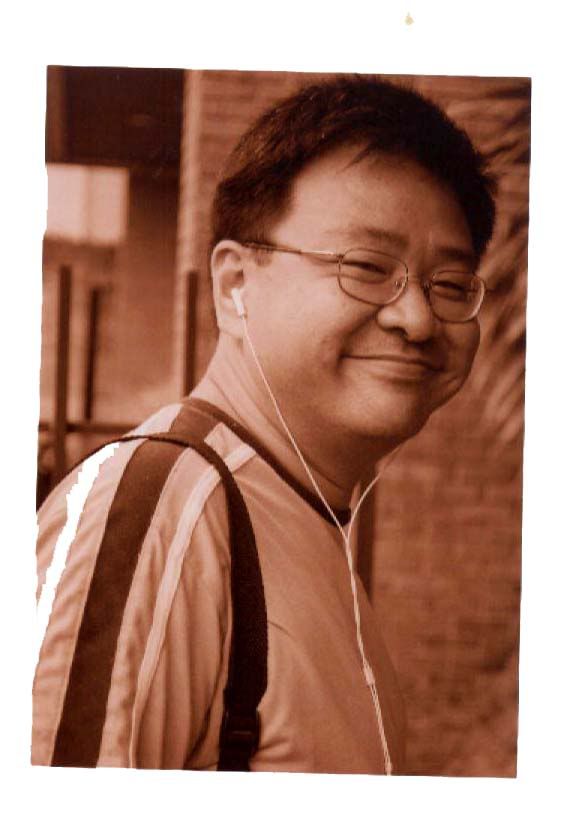
Dominique Cimafranca
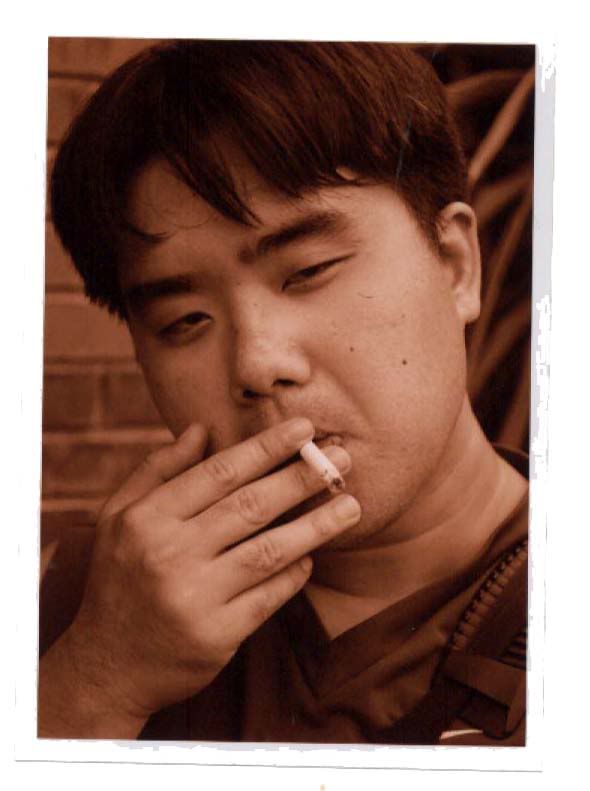
Douglas Candano
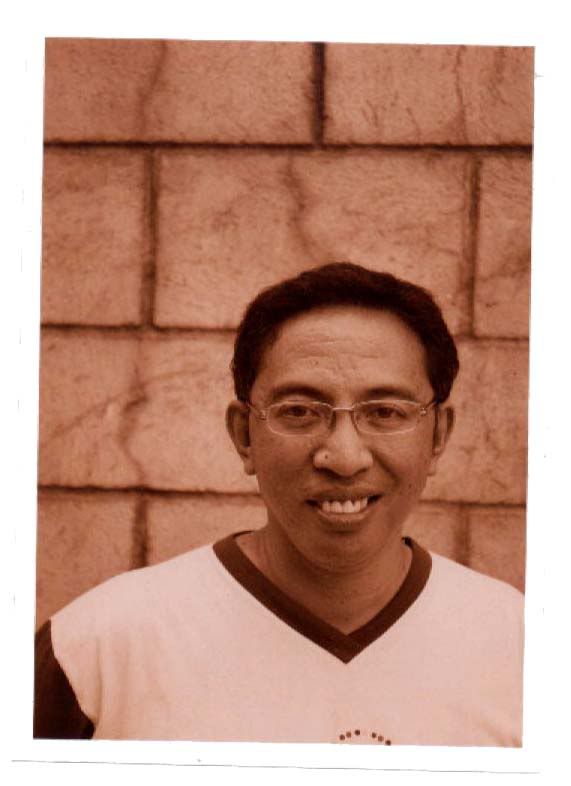
Noel Pingoy
Labels: dumaguete writers workshop, philippine literature, writers
[0] This is Where You Bite the Sandwich

 4:59 PM |
Independence From Holy Monkeys
4:59 PM |
Independence From Holy Monkeys
"When a book is burned, the ultimate tyranny has been committed."
--
John SteinbeckThey are burning books in Manila -- and the very thought of that sends chills to my bones, because no matter how "noble" or "sacred" the reason may be, there is something undeniably barbaric to that act of setting fire to bound volumes. The book, after all, is the singular symbol for human civilization, the epitome of our pursuit for enlightenment—indeed (and quite ironically perhaps), adherents of all the major faiths are called People of the Book, because we take sacred the bound pronouncements of our faith, like the Bible, the Talmud, or the Koran. To burn any book --
even if the disputed book is accused of heresy, blasphemy, or just plain stupidity -- becomes the repugnant anti-thesis for what makes us human. To burn a book is to eradicate the divide that separates us from mere monkeys. There are many monkeys in Manila, all of them smug in their self-generated aura of righteousness.
Sometimes I wonder if there are monkeys in Dumaguete, too.
I can imagine the bonfire that must have made Manila mayor Lito Atienza smile, the grin quite impish, like that of a marmoset's. I can imagine the flames that must have licked at the pages and the glued bindings, while the ashes of what had once been printed words rained down on a gleeful crowd, the way it must have been when the Puritans -- secure in their paranoid divinity -- were burning women accused of witchcraft in Salem. History has since redeemed these "witches," and condemned those "righteous" men and women of Salem to the footnotes of villainy.
How will history treat the "righteous" people of Manila? The answer is so easy to predict.
A quick run-through of
the history of book-burning ultimately cast burners in the most unfavorable light -- no matter how popular their act might have been at the time of the bonfire. Our Manila book-burners share ignominy with the likes of China's
Qin Shi Huang who ordered all philosophy books and history books burned in 213 B.C., which led to the live burial of a large number of intellectuals who did not comply with the state dogma;
Theophilus who trashed, burned, and looted the library of the Serapeum in Alexandria in 392 A.D., at the order of Theodosius I;
Tomas Torquemada who promoted the burning of non-Catholic literature, especially the Jewish Talmud; the illiterate Prague archbishop
Zbynek Zajic z Hazmburka in the court of his palace who, in 1410, burned John Wycliffe's books; the notorious
Girolamo Savonarola who precipitated what is now known as the "Bonfire of the Vanities," burning books, cosmetics, fine dresses and furniture, copies of Boccaccio's
Decameron, and all the works of Ovid that could be found in Florence;
Fray Diego de Landa, acting bishop of the Yucatan, who threw into the fires the sacred books of the Maya, in 1562;
Armand Dufau, the director of the school for the blind in Paris, France who in 1842 ordered the burning of books written in the new Braille code; and
Adolf Hitler and the Nazi Party who, on 10 May 1933 on the Opernplatz in Berlin,
burned around 20,000 books from the Institut fur Sexualwissenschaft and the Humboldt University, including works by Thomas Mann, Erich Maria Remarque, Heinrich Heine, and H.G. Wells. Add to this list
Mayor Lito Atienza and the warriors of faith of Manila.
One should not take this as a defense for Dan Brown's
The Da Vinci Code. I read the hardcover many years back, when the controversy was still building and the book still gathering speed to race to the top of bestsellers lists everywhere. I found it escapist fare, an enjoyable book which was so badly-written I actually vacillated between awe for its pace and page-turning ability, and the leaden prose that proved almost fatal. I did
not want to be seen anywhere reading it, and subsequently gave it away to my high school best friend Jacqueline, who in high school introduced me to
Holy Blood, Holy Grail by Michael Baigent, Richard Leigh, and Henry Lincoln, which proved the better read. (I have yet to see the movie by Ron Howard, but have taken note of the critical drubbing it is getting -- from the
New York Times to Salon.com, to ordinary people who have already seen it either in Manila or Cebu. The verdict has pronounced it mediocre beyond any expectations.)
Still, I had always found the idea espoused by Brown as something intriguing, but also disposable given the holes in his research.
But to burn the book for heresy? Are we back in the Middle Ages?The
Philippine Daily Inquirer reported last May 27 that copies of the book and the film -- mostly photocopies and pirated DVDs and VCDs -- were fodder to a bonfire at the Bonifacio Shrine during a prayer rally organized by youth and religious groups, all in the name of countering blasphemy. According to reporters Nini Valera and Tina G. Santos, "news of the book burning started to circulate in coffee shops about two weeks before the movie opened. The idea was first attributed to a group of Ateneo alumni who protested what they said was the book's attacks on the Catholic faith." The alleged leader of the book burning movement Jesse Paredes, an Ateneo alumnus and frequent bar customer in Malate, reportedly crowed, "God is big in Manila."
(And small everywhere else?)That sweeping sense of arrogance and self-righteousness is the one thing that has always alienated me from my roots of Christian fundamentalism -- which I take as also the reason why the Christian faith has lost so much of its flock all over the world, and given rise to the popularity of such books as Brown's. (In Europe, for example, all those beautiful cathedrals we see in pictures cater to almost empty houses every Sunday.) I was the stereotypical Sunday School kid growing up, but I've since come to question the stupefying insularity of fundamentalist thinking, which smacks of self-willing blindness to social context and multiculturalism, affirmed by pronouncements such as "being blind to the sins of the world." I found that fundamentalism bred so much hatred, intolerance, and arrogance that I wanted no part of it anymore. Mama always told me anyway that "God is a personal God" -- hence, personal worship as the only way to preserve faith without subscribing to the close-minded herd-mentality of fundamentalism. Here is a certain Mike Bichara, for example, who said that the book burning was "meant to dramatize their sentiment against the book and the movie." The story also reported that he owned several moviehouses in the provinces, and said he banned
The Da Vinci Code as well, saying that people in the provinces won't be interested in the movie. "They don't understand it," he said. "It's mostly dialogue anyway."
What the--? Arrogant bastard.My metaphorical paradigm for faith is the Old Testament picture of
Jacob wrestling with the angel, in Genesis 32:22-32. "Question your faith, question your preacher," I always tell everyone who asks me about faith. "That's the only way to lead an active Christian life. To just sit in church and nod and nod and nod DO NOT make you a good Christian. It just makes you an excellent nodder." To
wrestle, to consider carefully each tenet of faith, to be a good Christian is to weigh everything, especially the spiritual significance of the utterances of "prophets" -- because there are too many false ones. For a long time, I went with mother to her church whose preacher would talk long and hard over ... absolutely nothing; it left me frustrated because I wanted to learn something, which might have accounted for those years when I suddenly just stopped going and watched TV instead. Early Sunday morning cartoons, especially
The Simpsons, became the new religion. About three years ago, a friend invited me to her church, which had a medical doctor for a preacher, and found that the spiritual became more compelling when it also courted the cerebral. And yet, one time, that enlightened church invited a not-so-enlightened guest preacher who proceeded to slam the Modern Woman for going out of the kitchen, which was "her place." In the middle of his holy, macho tirade, I stood up and walked out.
Of course, I question, too, the "facts" Dan Brown stirs up in his fiction. I question the dubious beginning of his grail theory which sprung from the historical hoax planted by
Pierre Plantard, a known con artist. I question, too, his representation of the Opus Dei, and the many other misrepresentations and misinformation he peppers his book with.
So what good can
The Da Vinci Code do for us? Paradoxically, it makes us an active participant in our search for God. It makes us struggle in an effort of knowing our faith more, instead of just standing by and nodding to all dogmas fed to us. It makes us take our faith seriously, maybe for the first time in a lifetime of mere lip service, and makes us start reading up on our faith's history, its controversies, its paradoxes, and its enduring legacies.
Time Magazine, for example, has recently credited the book for
opening up theological arguments about the role of Mary Magdalene in the Early Church. Reduced, mistakenly, by a very patriarchal Church to the role of redeemed prostitute, we now see Mary Magdalene in a new light, as an apostle of the first rank. If for that, I am thankful for Dan Brown for stirring the tempest so information like these can finally be made known.
Book-burning and censorship do not work, because they employ the mistaken notion that by denying people access to "dangerous" information, they are ultimately saved. That notion is wrong, and history has proven this over and over again.
Independence Day is just around the corner, and perhaps instead of just celebrating the independence of a nation, we should also take into account the necessity for declaring the independence of the mind and the pursuit for knowledge and enlightenment, from the enslavement of medieval thinking cloaked by the sheen of religiosity.
And I hope this to be the case even for my small city. Last Wednesday, we went to Ever Theater to be the first in line to watch the first-day showing of
The Da Vinci Code, as promised by its schedule. We were met instead by a poster for
Nanny McPhee.
"What happened to
Da Vinci Code?" I asked the box-office ticket seller. She only smiled, and laughed nervously.
A thought occurred to me. "Did the city
ban the movie?" I asked.
She laughed nervously again, and never said a single word.
Maybe there is a ban, and maybe there is not. But what I don't want, most of all, is to get an affirmation that even in this "enlightened" University Town -- local bastion of learning, inquiry, and independent thought -- there are monkeys in City Hall.
Hear that Perdices, you old ape?Labels: issues, politics, religion
[0] This is Where You Bite the Sandwich

Wednesday, June 07, 2006
 6:38 PM |
What a Visit to Dumaguete Can Do to Your Imagination
6:38 PM |
What a Visit to Dumaguete Can Do to Your Imagination
Hey, look.
Dean Francis Alfar's "Six From Downtown" -- dedicated to moi (the first time something was ever dedicated to me) -- is now published in this week's issue of
Philippines Free Press. Here's an excerpt:
The Wet Market
A week after I arrived in the city, I spent a day at the wet market, negotiating my way down the slippery floors and taking pictures. I was soon lost in the brilliant rainbow of fresh seafood, laid out in ice, suspended on hooks, swimming in plastic pails and low metal drums, whose names brought back memories of my childhood: palos, pating, alimasag, pindangga, lapu lapu, apahap, sap sap, pompano, tambacol, labahita, malasugi, pugita. At other stalls, I found trays of lato, seaweed that resembled a miniature bunch of grapes which my parents loved dipping in a mix of crushed garlic and spicy vinegar, as well as palm-sized oysters, their dull shells encrusted with barnacles.
One stall's sign captured my attention and got my taste buds going: Fresh Sirena. I smiled to myself, surprised at how many years had passed since I last tasted mermaid. When I was a child growing up in the south, my grandfather would take me out mermaid fishing. The boat of my memory was cramped and seemed ungainly in the water, but none of that mattered since I loved being out at sea with him.
"They think it's unlucky," he told me once, when I observed that it seemed only men went into the sea. "It does not matter to me that you are a girl. You're what God has given us and that's all the luck we'll need."
At a precise position whose exact oceanic location was known only to him, my grandfather would drop the makeshift anchor overboard and organize the fishing lines, stretching the fine filament across the span of his arms, the very same ones he claimed he had purchased from American soldiers before they fled the Japanese. When all the preparations were done, he'd ask me to attach the bait. This was one of the best parts for me because I got to open the large biscuit tin with the end of a spoon and select a piece of jewelry. I would scoop out a handful of shiny trinkets and fuss over them, showing off to my grandfather how seriously I took the task. My favorite bait was a gold scapular embossed with the image of the Virgin Mary. After I had carefully attached the bait to the line, my grandfather would always tell me to sit still, watch the sea quietly and be ready with the net. Then he'd slowly lower the filament into the water, one hand unrolling calculated measures of length. Sometimes, it took forever for a mermaid to bite, and I remember thinking that perhaps they had all the jewelry they'd ever need. While waiting, my grandfather would smoke a thin cigarette between his teeth, flipping it over into his mouth when only the smouldering filter remained, checking once in a while if I had a firm grip on the wooden handle of the net that was my part in things.
"Be ready at any time," he'd intone, exhaling cigarette smoke into the air laden with salt.
The mermaids we'd catch ranged from two and half to three feet in length. Their tails, excellent steamed, grilled or boiled with tamarinds, were an iridescent green flecked with blue points of lights. Halfway up was the bony flesh that was always cast away after cutting: the torsos were mottled pink and grey, with protruding nubs where nipples would be; the thin arms ended in four fingers, a filmy web of flesh between each one. The egg-shaped heads were crowned with pale stringy hair, like the ghosts of seaweed, covering much of the face that was punctured thrice by tortoise-colored eyes and a gasping mouth lined with sharp tiny teeth.
"Here's one," my grandfather would whisper upon sensing the line grow taut, before exploding into action, standing up and reining in the filament, hand over hand, until the mermaid broke the surface of the sea, unwilling to let go of the shiny bait. At his signal I'd quickly extend the net, making certain to trap the glistening tail, and together we'd haul the mermaid into the boat, where my grandfather would exchange the string in one hand for a fire-hardened club and strike at the mermaid's head until it stopped moving. One was usually enough for our large family, but I remember during the times of fiesta how the sea would be dotted by little boats similar to my grandfather's, and how they’d return hours later, pitching low in the water, each with several mermaids.
I stood by the sirena stall and looked over what was offered, fighting the rising disappointment fueled by the memories of my childhood years. The mermaids lay side by side and almost haphazardly on top of each other, eyes closed and mouths agape, on a bed of crushed ice, most of them barely a foot long, some even smaller, and their tails had only the barest hint of green. Sensing my disquiet, the vendor, a middle-aged man with a red bandanna and a bulging belly, explained in a lugubrious tone that it was the lean season, and that all mermaids were that size nowadays.
I purchased the freshest looking one, astounded at the price per kilo, and asked if there was a place nearby that could grill it for me. The vendor smiled and, for one hundred pesos, offered to cook it himself. I suspected he was overcharging me but gave in when he agreed to throw in a handful of sea snails for free.
Go get your copy.
Labels: dumaguete, philippine literature
[0] This is Where You Bite the Sandwich

Sunday, June 04, 2006
 11:41 PM |
They Are Burning Books in Manila
11:41 PM |
They Are Burning Books in Manila
"When a book is burned, the ultimate tyrranny has been committed."
-
John SteinbeckLabels: issues
[0] This is Where You Bite the Sandwich

Thursday, June 01, 2006
 8:57 AM |
Cyrillic for Dummies
8:57 AM |
Cyrillic for Dummies
Learn how to write your name in Russian.
Go to this link, type in your name in the search field, and click the button.[via
pine for pine]
Labels: humor, queer
[0] This is Where You Bite the Sandwich

GO TO OLDER POSTS
GO TO NEWER POSTS

















 11:08 AM |
Negros From a Bus Window
11:08 AM |
Negros From a Bus Window
 12:01 AM |
Top Stories by Pinoy Writers
12:01 AM |
Top Stories by Pinoy Writers
 10:28 PM |
That Dog
10:28 PM |
That Dog
 10:40 AM |
Where is the Spy in the Sandwich?
10:40 AM |
Where is the Spy in the Sandwich?

 11:28 AM |
Help Wanted
11:28 AM |
Help Wanted
 12:03 AM |
It's True
12:03 AM |
It's True

 11:57 PM |
Peryodistang Pinay
11:57 PM |
Peryodistang Pinay
 12:37 PM |
A Strange Thought
12:37 PM |
A Strange Thought
 12:01 AM |
How We Walk On
12:01 AM |
How We Walk On
 11:14 PM |
Two Poems From That Parfan Boy
11:14 PM |
Two Poems From That Parfan Boy
 7:45 PM |
Epiphany
7:45 PM |
Epiphany
 11:55 PM |
Faces From the Summer Workshop in Dumaguete
11:55 PM |
Faces From the Summer Workshop in Dumaguete











 4:59 PM |
Independence From Holy Monkeys
4:59 PM |
Independence From Holy Monkeys
 6:38 PM |
What a Visit to Dumaguete Can Do to Your Imagination
6:38 PM |
What a Visit to Dumaguete Can Do to Your Imagination
 11:41 PM |
They Are Burning Books in Manila
11:41 PM |
They Are Burning Books in Manila
 8:57 AM |
Cyrillic for Dummies
8:57 AM |
Cyrillic for Dummies